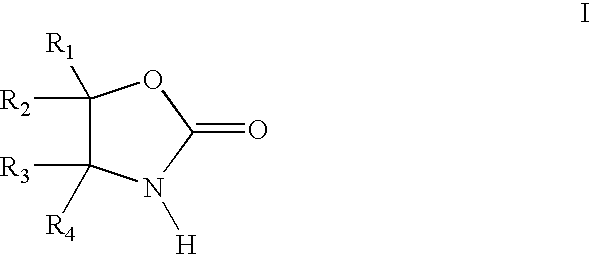Method for inhibiting biofilm growth
- Summary
- Abstract
- Description
- Claims
- Application Information
AI Technical Summary
Benefits of technology
Problems solved by technology
Method used
Image
Examples
example 1
[0035]A loop full of Sphaerotilus natans (S. Natans) from an Agar plate containing the S. Natans culture was inoculated in 150 mL of CYGA #1103 growth medium and agitated in a temperature-controlled shaker at 30° C. and 150 rpm for 20 hours to prepare a pre-culture. Five (5) mL of this pre-culture were inoculated into each of a series of 250 mL Erlenmeyer flasks containing 150 mL of CYGA growth medium for batch cultivation of the S. Natans. The bacterium were cultivated at 30° C. for 96 hours on a rotary shaker at 150 rpm. At these conditions, a biofilm layer approximately 2-3 mm high formed on the inside wall of each of the Erlenmeyer flasks near the liquid surface. Approximately 50 to 75 percent of the liquid growth medium in the flasks was carefully decanted, leaving the biofilm layer intact. The decanted liquid growth medium was discarded.
[0036]For the control, sterile tap water was added to an Erlenmeyer flask. In other tests (as shown in Table I), various levels of hypochlorou...
example 2
[0038]The procedure of Example 1 was followed except that the concentration of DMO-Cl was varied from 15 μL / L to 60 μL / L, and the contact time was 30 minutes to allow a better opportunity for survival and detection of the S. Natans microorganism. Results are tabulated in Table II. Symbols and footnotes used in Table II that are the same as those found in Table I have the same meaning.
TABLE IIChlorine (mg / L)Chlorine (mg / L)TestFC2End3Final CellGroupMediumTC1 (I)(I)TCEnd3 FCCount4AWater Control00003.1 × 105BHOCl51.10.930.310.12.3 × 104CDMO-Cl71.20.050.520.052.1 × 104DDMO-Cl81.180.120.470.071.6 × 104EDMO-Cl91.190.150.41007DMO-Cl (3-Chloro-4,4-dimethyl-2-oxazolidinone); Prepared using 15 μL / L Sustain ® Summer Shield, which contains approximately 3 mg / L of DMO.8DMO-Cl (3-Chloro-4,4-dimethyl-2-oxazolidinone); Prepared using 30 μL / L Sustain ® Summer Shield, which contains approximately 6 mg / L of DMO.9DMO-Cl (3-Chloro-4,4-dimethyl-2-oxazolidinone); Prepared using 60 μL / L Sustain ® Summer Shi...
PUM
 Login to View More
Login to View More Abstract
Description
Claims
Application Information
 Login to View More
Login to View More - R&D
- Intellectual Property
- Life Sciences
- Materials
- Tech Scout
- Unparalleled Data Quality
- Higher Quality Content
- 60% Fewer Hallucinations
Browse by: Latest US Patents, China's latest patents, Technical Efficacy Thesaurus, Application Domain, Technology Topic, Popular Technical Reports.
© 2025 PatSnap. All rights reserved.Legal|Privacy policy|Modern Slavery Act Transparency Statement|Sitemap|About US| Contact US: help@patsnap.com



